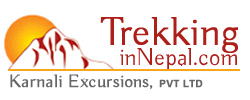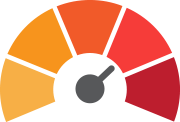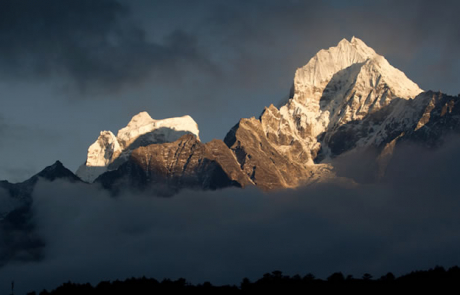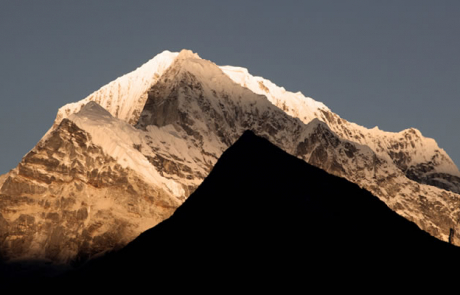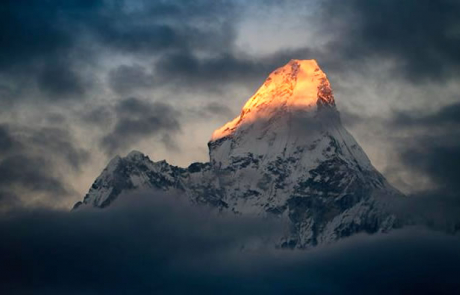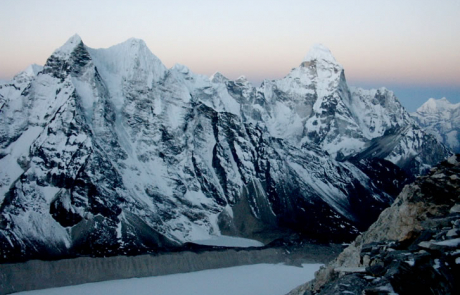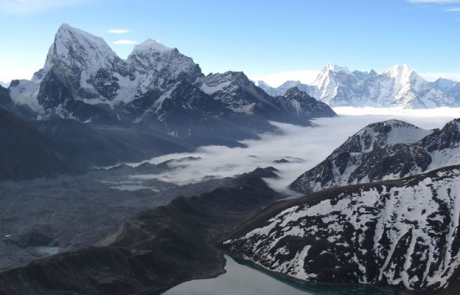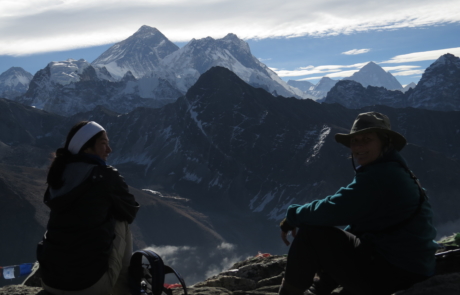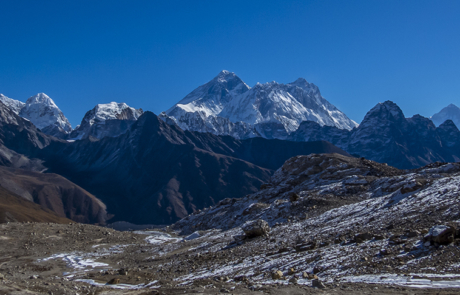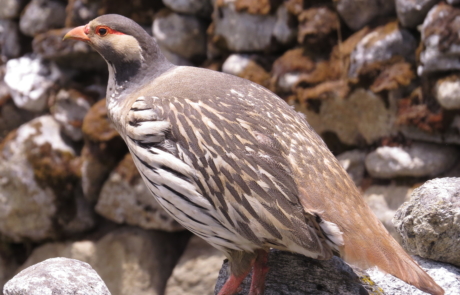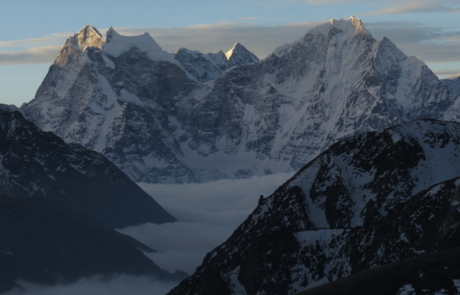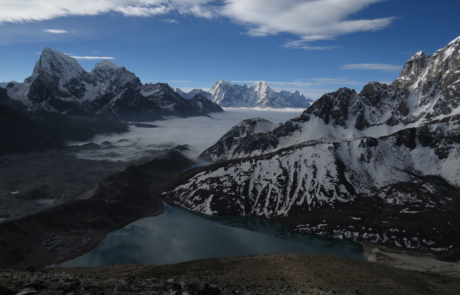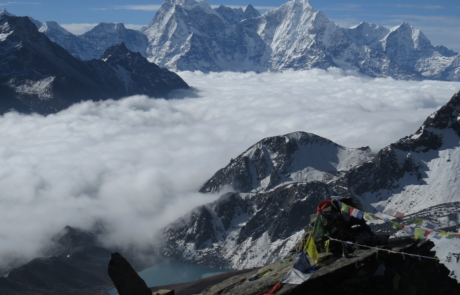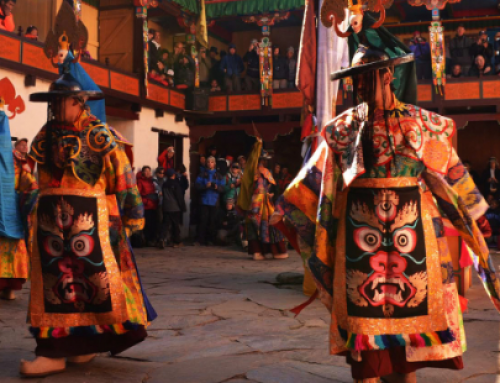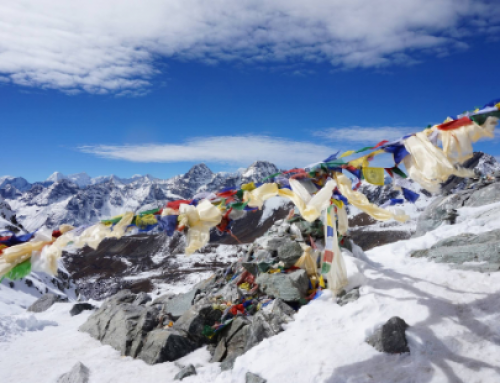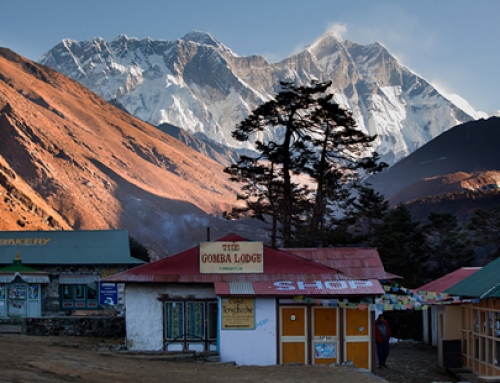Project Description
HIGHLIGHTS
-
Spectacular views of Mt. Everest, Cho Oyu, Makalu and Ama Dablam
-
Visit ancient monasteries and learn Buddhist traditions
-
Visit World Heritage Sites of Kathmandu
-
Explore Khumbu Valley and the splenda of the Khumbu icefall
-
Visit sacred lakes of the Gokyo valley
Rich in costume and culture, the villages we pass through on our way to Namche Bazaar allow us peeks into this famous Sherpa lifestyle and culture. Buddhist prayer flags, the hallmark of all Sherpa and Buddhist communities are found in every village. Mani stone walls and prayer flag poles that line our trails should all be passed on the left, in a clockwise fashion, as it is believed that this generates good karma for the journey ahead. The colorful Saturday market in Namche Bazaar shows off the busiest commercial center of the Khumbu region.
At Sonasa, the Gorko valley separates from the main Khumbu valley and now, instead of the view being dominated by Everest, it is dominated by another 8000m peak, Cho Oyu, the world’s sixth highest mountain and one of the less technical 8,000m peaks to climb. Early ascents were made from the Nepal side; now the usual way to the summit is via the north side in Tibet.
Once in the upper Gokyo valley, the trail passes the Gokyo lakes. Their vivid turquoise-blue color gives a spectacular foreground to the sharply pointed mountains to the north. An ascent of Gokyo Ri provides breath-taking views of the mountains straddling the Nepal – Tibet border. The great British explorer Bill Tilman referred to this area as, ‘The grandest 30 miles of the Himalaya’.
To reach the main Everest valley we now cross the Cho La 5,420m (17,782 ft), which connects the village of Dzongla (4830 m) to the east with the village of Thagnak (4700 m) to the west.. a truly memorable experience. From the Gokyo valley side the pass looks to be an impossible barrier. Here the trail winds its way through glacial debris, climbing steeply toward the summit that suddenly appears festooned in prayer flags. The trekker gets a real feeling of being amongst the great Himalayan peaks before dropping down to the Everest valley.
Once on the Khumbu side of the ridge, the trail winds through barren the landscape for another two days before reaching Gorak Shep, the site of the 1952 Everest Base Camp. With the retreat of the glacier, today’s base camp is another short day’s walk to the foot of the Western Rim and the Ice Fall. However, the best view of Everest from this valley is from the top of Kala Pattar. The climb looks easy but the altitude makes it quite an undertaking; however, the summit views make the effort very worthwhile. This trek is considered an experience of a lifetime from adventurous as well as the spiritual perspective. There will be ample opportunity to spend time to offer your prayers to sacred peak of Mount Everest, “Kaushiki” in Hinduism and “Quomolongma” in local Sherpa language. Touching or sprinkling water of Gokyo lakes is considered as holy act, which helps to cleanse sins of a lifetime.
TREK FEATURES
Total duration: Kathmandu-to-Kathmandu: 19 days
On the trek: 15 days
Max. Elevation: 5,550m
Trek difficulty: Strenuous and physically challenging
Trek style: Tea house trek
Group size: Max. 12 plus a local trek leader
Min. 1 plus a local trek leader
Best months: September to December & March to June
Accommodation: Twin sharing hotels in Kathmandu and local lodges during the trek (Based on B & B in hotels and full board in lodges)
Trip starts/Ends: In Kathmandu, Nepal
Trek leader: TBA
| ARRIVAL DATES | DEPARTURE DATES | PRICE | STATUS |
|---|---|---|---|
| Sunday 8 March, 2020 | Thursday 26 March, 2020 | USD 1799 | AVAILABLE |
| Sunday 15 March, 2020 | Thursday 2 April, 2020 | USD 1799 | AVAILABLE |
| Sunday 5 April, 2020 | Thursday 23 April, 2020 | USD 1799 | AVAILABLE |
| Sunday 12 April, 2020 | Thursday 30 April, 2020 | USD 1799 | AVAILABLE |
| Sunday 4 October, 2020 | Thursday 22 October, 2020 | USD 1799 | AVAILABLE |
| Sunday 18 October, 2020 | Thursday 5 November, 2020 | USD 1799 | AVAILABLE |
| Sunday 1 November, 2020 | Thursday 19 November, 2020 | USD 1799 | AVAILABLE |
| Sunday 8 November, 2020 | Thursday 26 November, 2020 | USD 1799 | AVAILABLE |
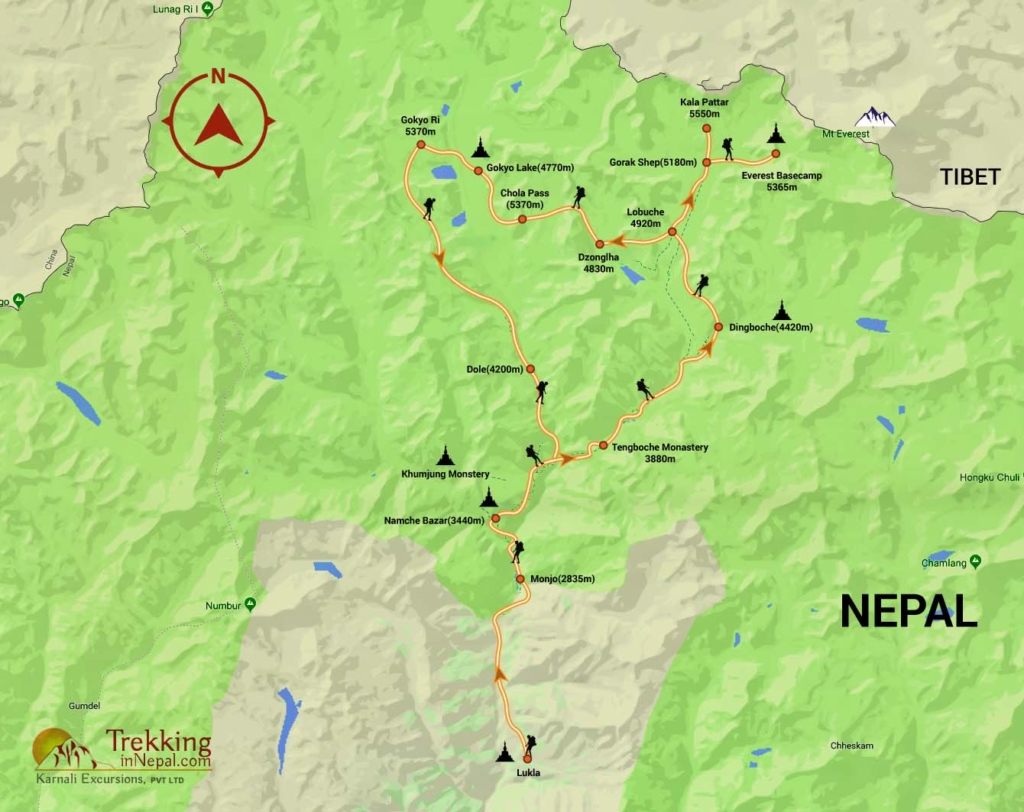
Inspire your friends and family members by sharing these amazing treks in the Himalaya.
